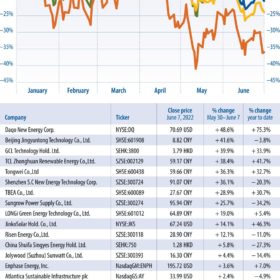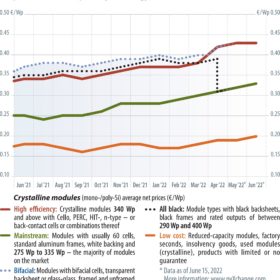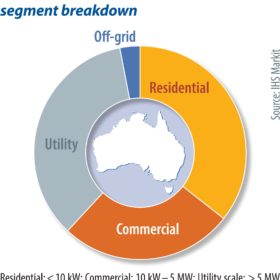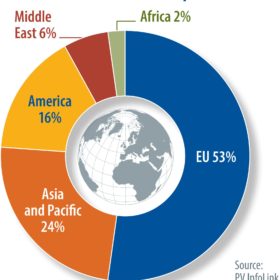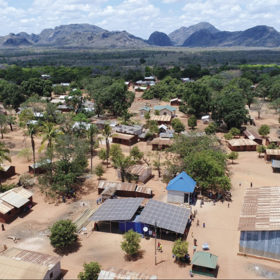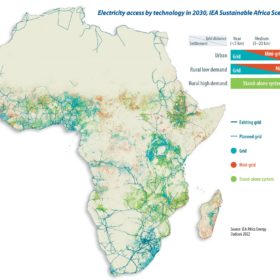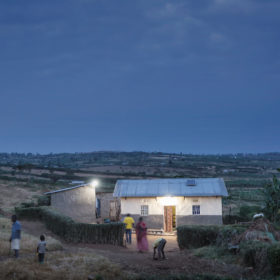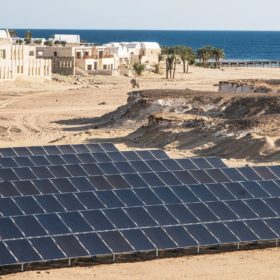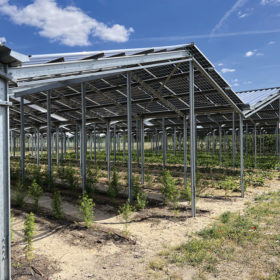More than energy access
Since the turn of the millennium the percentage of the world’s population with access to electricity has risen from 78% to 91%, according to calculations from the Alliance for Rural Electrification.
Solar weathers the storm
The Invesco Solar ETF, an exchange-traded fund that tracks the MAC Global Solar Energy Index, outperformed the S&P 500 and the Dow Jones Industrial Average in June, writes Jesse Pichel of ROTH Capital Partners.
Chaos with no end in sight
We in the solar industry are used to our share of craziness. For us, business as usual is more the exception than the rule. We are used to coping with all sorts of imponderables – chaos as usual. Companies that have mastered this from years of training will probably be able to navigate their businesses through these troubled times. Martin Schachinger of pvXchange finds that it has been a long time since the PV market has been as crazy as it is now. Prices are rising steadily across the board, but not for solar panels.
New government, new targets
IHS Markit has increased its solar installation forecast for Australia to 45 GW between this year and 2030, following the recent election which saw the country vote in the Labor Party. Climate-focused candidates won a majority in May, with plans to invest in grid upgrades to facilitate the development of Renewable Energy Zones (REZs) and community solar-plus-storage projects. IHS Markit’s Clare McCarrick writes that solar installations will support the new government’s target of a 43% emissions reduction by 2030, based on 2005 levels. This is a significant increase on the previous government’s target of a 26% to 28% reduction.
Global module demand to hit 240 GW in 2022
Despite polysilicon shortage-induced high module prices, the market saw strong demand in the usually slower summer season this year, due to the global race to net-zero emissions. Corrine Lin, chief analyst at PV InfoLink, expects demand to reach 240 GW, with China and Europe set to contribute more than 80 GW and 50 GW, respectively. Together with the United States, which has paused the introduction of new solar tariffs, the three largest markets will dominate nearly 70% of global demand.
African energy’s investment gap
Well over 600 million people throughout the world do not have access to electricity, while another 1.5 billion suffer with unreliable electricity services. Sub-Saharan Africa accounts for more than 70% of the electricity access gap. Moreover, writes David Lecoque of the Alliance for Rural Electrification (ARE), the number of people without access to electricity did not change all that much between 2019 and 2021.
Solar’s potential to radically transform African energy
As demand for energy grows across the African continent, solar has an outsized role to play as the cheapest source of power from now to 2030. But the cost of financing must fall for solar projects to be successful. Laura Cozzi, chief energy modeler at the International Energy Agency (IEA), shares some key takeaways from the recently published Africa Energy Outlook report.
The growing pains of PayGo solar
Pay-as-you-go (PayGo) services have long been touted as an answer to the challenge of bringing affordable electricity to hundreds of millions of people currently off the grid. But the business model is not without pitfalls. In some cases, the promise of energy access has turned into a debt burden for the world’s poorest, while high-profile players have already fallen prey to the dynamics of the uncharted market. The industry is now at a crossroads and needs to find a way to strike a balance between rapid growth and customer protection.
Spark of a yellow sun
This year, pv magazine’s annual In Conversation special turns its focus to the world’s most sun-rich continent – Africa. Despite its wealth of solar resources, approximately 600 million Africans lack access to electricity. But with the energy transition accelerating the world over, Africa’s solar resources could have an enormous impact both domestically and through exports. We’ve conducted a series of interviews from across the vast continent and the broad market of solar energy, ranging from Egypt to South Africa and agriPV to green hydrogen production, and we’ve only just scratched the surface.
Farming the southern sun
Sunfarming is taking the lead when it comes to agriPV project development and investment in Germany. And in South Africa, Sunfarming’s Food and Energy and the Food Education Energy Development (FEED) program has developed two unique concepts through which it can share its agriPV expertise. pv magazine sat down with Sunfarming director of international projects, Edith Brasche, to talk about the company’s South African projects.

